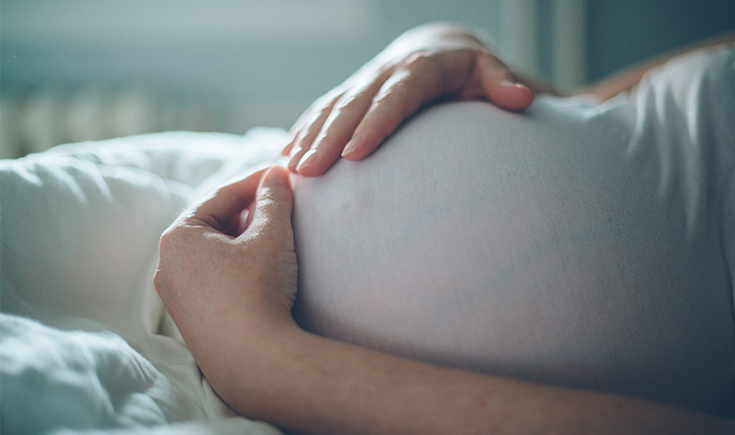

A stillbirth is the birth of a baby who has died any time from 20 weeks in the pregnancy through to the due date of birth. The baby may have died during the pregnancy, or less commonly, during the birth.
Australia sadly holds one of the worst records in the developed world for stillbirth. It’s a national tragedy that’s nearly double the road toll.
Across the country, around 2,200 babies are stillborn every year. That’s six every day.
Not all stillbirths are preventable but some are. Whilst many people are aware of the issue of stillbirth, a survey has found that there is a lack of understanding about how to reduce the risk.
How to help reduce the risk of stillbirth
There are three important things that can be done to help reduce the risk of stillbirth. By keeping these three things in mind, and doing your best to stick to them, you can greatly reduce the risk to your baby.
1. Go to sleep on your side after 28 weeks of pregnancy
Research shows that sleeping on your side instead of on your back after 28 weeks can halve the risk of stillbirth. After 28 weeks, sleeping on your back compresses major blood vessels and reduces the supply of blood to your womb, and oxygen to your baby.
It doesn’t matter if you sleep on your left or your right side, whichever you find more comfortable. If you wake on your back, don’t panic, just switch to your side again. Read more on how sleeping on your back increases the risk of stillbirth here.
2. Be aware of your baby’s movements
Research shows that over half of all women who had a stillbirth noticed that their baby’s movements had slowed down or stopped. You will generally start to feel your baby move between 16 and 24 weeks into your pregnancy, so that is the time to start being aware.
There is no set number or type of movements, so you should get to know your own baby’s unique pattern of movements. If you do notice any changes or differences, contact your maternity care professional immediately. Read how to get to know your baby’s movements here.
3. If you smoke, stop
Among the many health risks to your baby, smoking is a significant risk factor for stillbirth and miscarriage. Your midwife, GP, or obstetrician can offer advice on ways to give up. One of the best places to start is Quit. You can call their hotline on 13 78 48, and chat to supportive counsellors who will not make you feel guilty.
Also avoid being around other people’s cigarette smoke. If your partner smokes, they should quit. Making sure that pregnant women aren’t exposed to second-hand smoke is important to reduce the risk of stillbirth. Read more on the effects of smoking during pregnancy here.
Together, Australians can reduce the risk
Stillbirth is Australia’s hidden health crisis. The attached stigma is stopping people from sharing important information, so if we can end the silence, more and more people will become aware of these important three steps to minimise the risk.
A good place to get the conversation going is by sharing this article with families. If the pregnant women we know are saying that something doesn’t seem right with their baby or the pregnancy, we need to remind them to trust their instincts. We have to stop the unhelpful narrative about mothers being emotional and worrying too much, as well as the myths about ways to ‘wake’ their baby up in utero instead of contacting medical professionals.
For more information and support, contact Red Nose, SANDS (miscarriage, stillbirth & newborn death support), Stillbirth Foundation, or Stillbirth Centre of Research Excellence.
https://rednose.org.au/
https://www.sands.org.au/
https://www.sands.org.au/
https://www.stillbirthcre.org.au/























